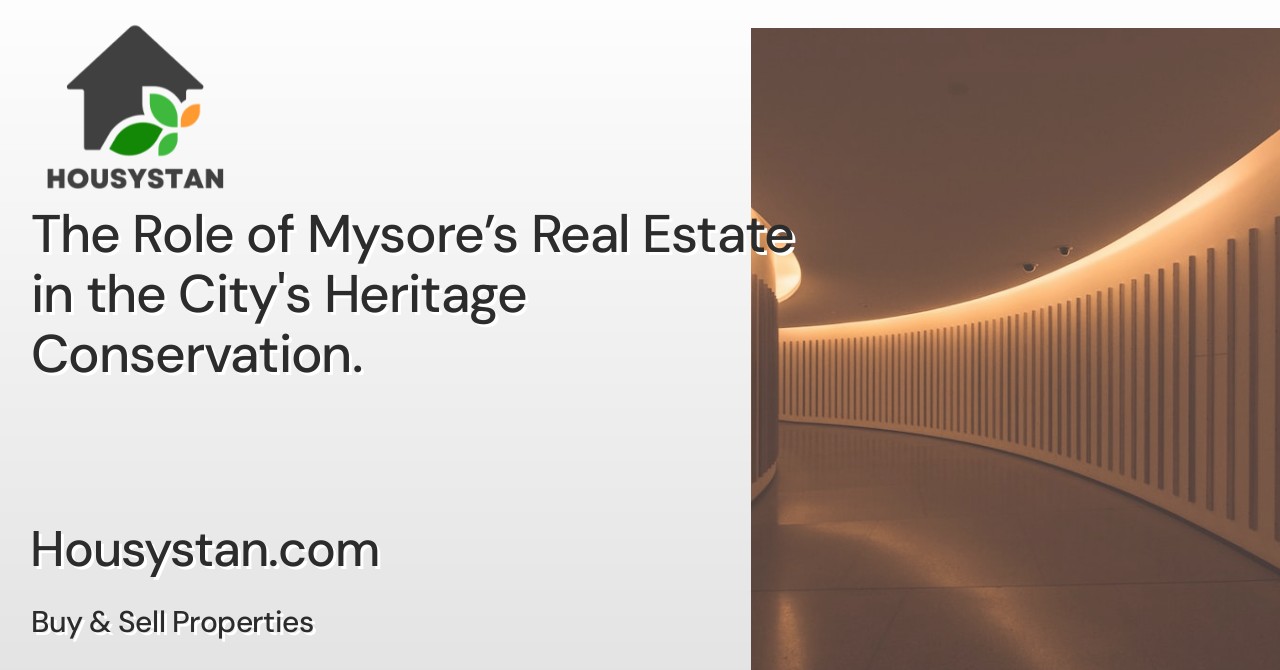The Role of Mysore’s Real Estate in the City's Heritage Conservation
Read latest blogs and articles from Housystan

The Information mentioned here was last updated on:
27/11/2025The Role of Mysore’s Real Estate in the City's Heritage Conservation
Mysore, renowned for its regal history and architectural grandeur, stands as a symbol of Karnataka’s rich cultural legacy. The city’s unique blend of historical monuments, royal palaces, and traditional neighborhoods draws visitors and homebuyers alike. As urban development accelerates, Mysore’s real estate sector plays a pivotal role in preserving the city’s heritage, ensuring that modernization harmonizes with the preservation of its iconic charm.
Real estate developers in Mysore are increasingly recognizing the importance of heritage conservation. Many new residential and commercial projects are designed to complement existing architectural styles, incorporating traditional elements such as tiled roofs, ornate facades, and intricate woodwork. By blending modern amenities with age-old aesthetics, these developments maintain the city’s historic identity while providing contemporary comforts for residents and businesses.
- Verified Tenants/Buyers
- Unlimited Property Listing
- Zero subscription/charges fee
The Mysore Urban Development Authority (MUDA) and local planning bodies have established strict guidelines for construction in heritage zones. These regulations help safeguard the city’s most treasured sites, including the Mysore Palace, Chamundi Hill, and the charming lanes of Devaraja Market. Property developers are encouraged to restore and repurpose old structures, transforming heritage buildings into elegant boutique hotels, cultural centers, and art galleries. This adaptive reuse not only preserves architectural heritage but also fosters tourism, economic growth, and community pride.
Additionally, Mysore’s real estate market is actively involved in promoting sustainable practices. Green spaces, landscaped gardens, and eco-friendly building materials are becoming integral to new projects. These initiatives support environmental conservation while maintaining the visual and cultural continuity of Mysore’s urban landscape.
For homebuyers and investors seeking properties in Mysore, choosing real estate that values heritage conservation ensures not only a sound investment but also a commitment to preserving the city’s storied legacy for future generations. As Mysore continues to evolve, its real estate sector remains at the forefront of efforts to celebrate and conserve the city’s historical treasures, making it an ideal destination for those who cherish heritage and modernity alike.